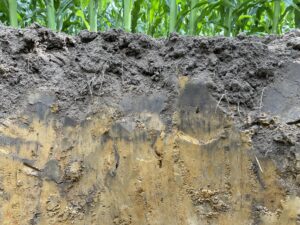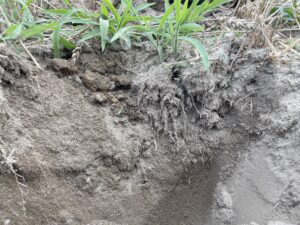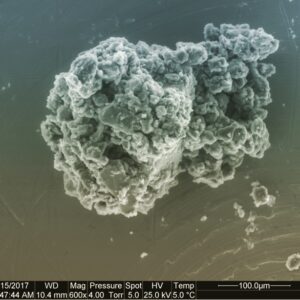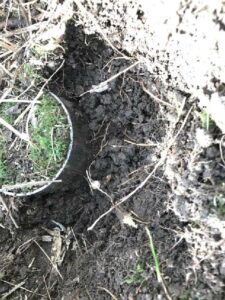Soil Physical Health
go.ncsu.edu/readext?954619
en Español / em Português
El inglés es el idioma de control de esta página. En la medida en que haya algún conflicto entre la traducción al inglés y la traducción, el inglés prevalece.
Al hacer clic en el enlace de traducción se activa un servicio de traducción gratuito para convertir la página al español. Al igual que con cualquier traducción por Internet, la conversión no es sensible al contexto y puede que no traduzca el texto en su significado original. NC State Extension no garantiza la exactitud del texto traducido. Por favor, tenga en cuenta que algunas aplicaciones y/o servicios pueden no funcionar como se espera cuando se traducen.
Português
Inglês é o idioma de controle desta página. Na medida que haja algum conflito entre o texto original em Inglês e a tradução, o Inglês prevalece.
Ao clicar no link de tradução, um serviço gratuito de tradução será ativado para converter a página para o Português. Como em qualquer tradução pela internet, a conversão não é sensivel ao contexto e pode não ocorrer a tradução para o significado orginal. O serviço de Extensão da Carolina do Norte (NC State Extension) não garante a exatidão do texto traduzido. Por favor, observe que algumas funções ou serviços podem não funcionar como esperado após a tradução.
English
English is the controlling language of this page. To the extent there is any conflict between the English text and the translation, English controls.
Clicking on the translation link activates a free translation service to convert the page to Spanish. As with any Internet translation, the conversion is not context-sensitive and may not translate the text to its original meaning. NC State Extension does not guarantee the accuracy of the translated text. Please note that some applications and/or services may not function as expected when translated.
Collapse ▲Overview
Physical soil health refers to the capacity of soil to meet ecosystem requirements of water storage, aeration, structure, and the ability to recover from disturbances.


The primary physical characteristics that determine soil health include soil texture, structure, aggregation, bulk density, and porosity. From these, soil texture is a more static physical characteristic inherently acquired from the parent material during the formation process. The term soil texture is commonly used as soil type. Soil structure, aggregation, bulk density, and porosity are all dynamic properties and can be influenced by management practices. The size of the soil primary particles (sand, silt, and clay) determines soil texture, and soil structure refers to how these particles are aggregated and arranged in the soil architecture. Aggregate stability refers to the capacity of soil to bind mineral particles and organic matter together to maintain structure when facing disturbing factors like tillage, rainfall, erosion, shrinking, and swelling. Bulk density refers to the mass of solids (mineral and organic soil particles) present in a unit volume of soil. The pore spaces between soil mineral and organic particles determine porosity.
These interconnected physical properties promote root growth and development, seedling emergence, organic matter accumulation, water infiltration, water retention, and permeability (enhanced movement of air and water within the soil). Poor physical soil health causes compaction, surface crusting, and erosion. Soils in North Carolina range from heavier clay soils with drainage issues to sandy soils with lower water retention and subsurface compaction, and to organic soils with poor drainage and aeration. Each of these regions experiences different constraints and requires varied management strategies to manage soil health.
Management Recommendations
Conservation management practices like minimum or no-tillage, cover cropping, and crop rotation can improve soil aggregation by reducing soil disturbance, providing soil cover, and enhancing organic matter level and microbial activity. These sustainable practices enhance physical soil health by reducing aggregate breakage, surface crusting, and erosion.
Please see the Tillage Management and Managing Cover Crops sections in the Soil Health and Management extension portal for additional information.
Assessment Tools
The USDA-NRCS has developed a soil health and management assessment framework (SMAF), which measures macroaggregate (size > 250 µm) stability as a primary indicator of soil health. Since management practices can alter aggregate stability, this measurement provides a useful metric for evaluating management strategies for maintaining soil health. Other analyses developed by the Cornell Soil Health Laboratory (Comprehensive Assessment of Soil Health or CASH) evaluate additional physical properties like aggregate stability, available water capacity, and surface/subsurface hardness to determine physical soil quality. In addition, field observations of surface crusting, infiltration, soil compaction, soil aggregation, soil structure, and soil color can also facilitate assessing soil health. Further details are available in USDA-NRCS technical note 450-06 Cropland In-field Soil Health Assessment Guide. New and emerging technologies, like artificial intelligence, are also used to conduct soil health assessments. NCSU researchers are leading the development and adoption of these tools.




